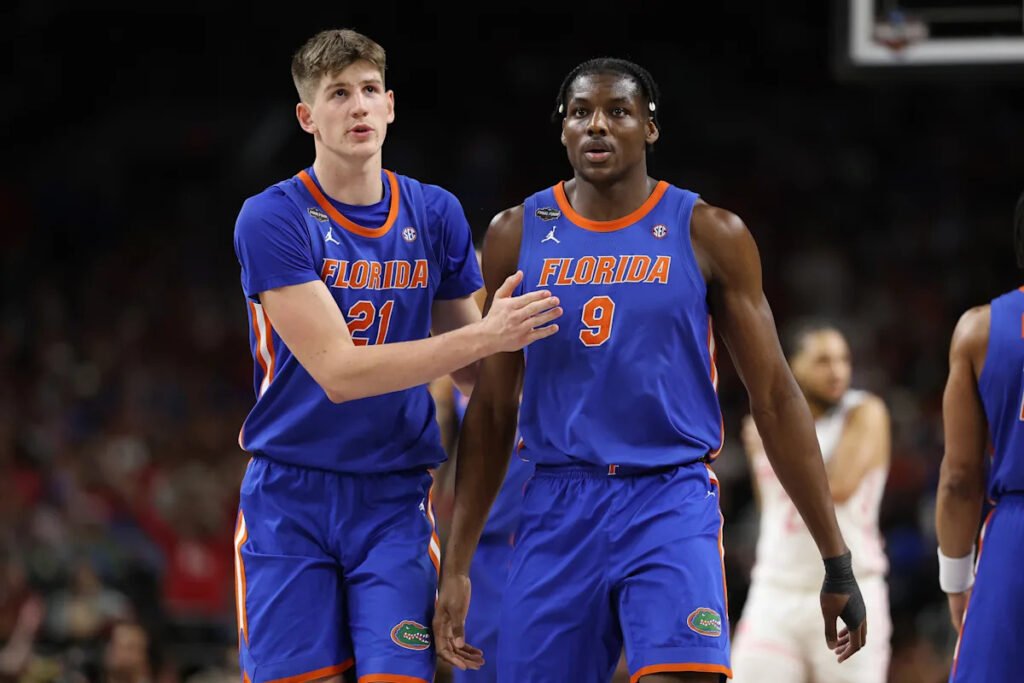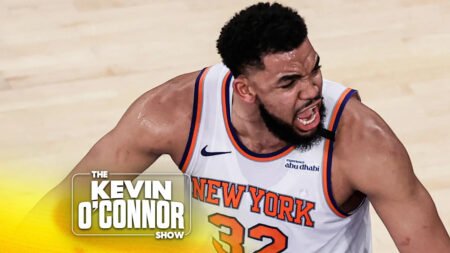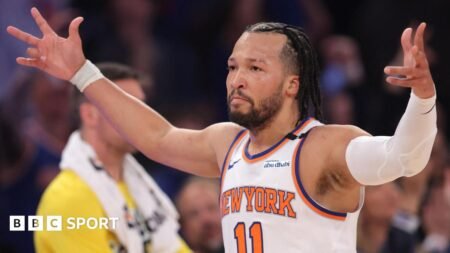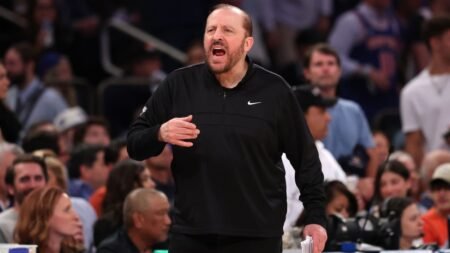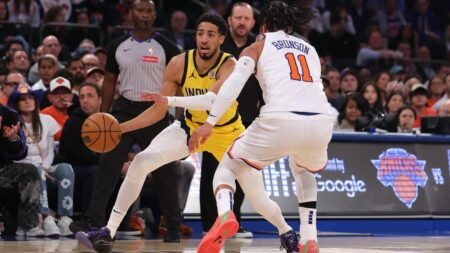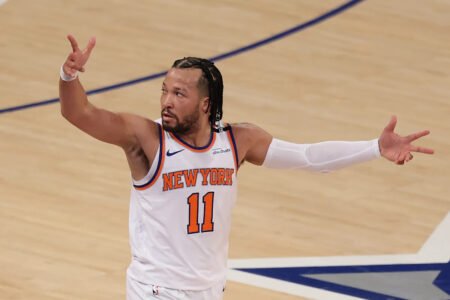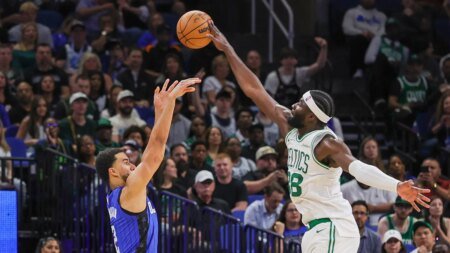Condolences to any NBA franchise hoping to unearth an overlooked gem late in next month’s NBA Draft.
This year’s second round appears to be historically barren as a result of the skyrocketing NIL market across college basketball.
Advertisement
In the pre-NIL era, college basketball’s top underclassmen routinely entered the NBA Draft even if they were projected to slip to the second round or go unselected. They earned more money chasing an NBA two-way contract or an overseas payday than they could returning to a college model where the only payouts came under the table.
The calculus began to change in 2021 when a series of court rulings forced the NCAA to allow athletes to benefit financially from their name, image, and likeness without fear of penalty. Now underclassmen who are fringe NBA prospects are returning to college in record numbers because they can earn as much as $3 to $4 million per year playing for deep-pocketed college programs.
Texas Tech’s JT Toppin, Florida’s Thomas Haugh, UConn’s Alex Karaban, Duke’s Isaiah Evans and Purdue’s Braden Smith and Trey Kaufman-Renn were among the prominent college stars who did not even test the waters this spring. Only 106 players , the league announced last month. That’s the lowest number of early entrants since 2015, down from
Advertisement
Many of those 106 early-entry candidates did not remain in the NBA draft — even some who had a chance to be selected as high as in the 20-45 range. Michigan’s Yaxel Lendeborg pulled out on the eve of Wednesday’s 11:59 p.m. ET deadline. and . Days earlier, Boogie Fland and Darrion Williams did the same.
Others truly took their decisions down to the wire. On Wednesday afternoon, promising Auburn point guard Tahaad Pettiford revealed he’d return to school, as did Kentucky’s Otega Oweh and San Diego State’s Miles Byrd. Arkansas’ Adou Thiero, reigning Big East player of the year RJ Luis and ex-Florida State star Jamir Watkins chose to stay in the draft.
The flood of returning talent to college basketball reflects how much money top-tier programs are willing to spend to try to build the best possible rosters. The Field of 68’s Jeff Goodman that as many as 15 teams will have $10 million rosters next season. Those in the NIL space who have spoken to Yahoo Sports say that it will take up to $6-8 million just to be competitive in a power conference.
For as long as that kind of money remains available, the sport of college basketball will always be a big winner at the NBA Draft withdrawal deadline. Fringe NBA prospects are staying in college longer than they have in at least a decade or two, maybe longer.
Advertisement
Which stay-or-go decisions were the most impactful this season? Below is a long list of college programs who got stronger and a few programs who lost key players they may struggle to replace.
Defending national champion Florida gets a huge boost with both Alex Condon (21) and Rueben Chinyelu choosing to return to Gainesville next season. (Jamie Squire/Getty Images)
(Jamie Squire via Getty Images)
WINNERS
1. FLORIDA
Don’t count out Florida as a potential repeat national champion. The Gators project as no worse than a preseason top-five team next fall thanks to a wildly successful offseason so far.
It starts in the frontcourt where Florida returns all four players who were part of the rotation during last season’s NCAA tournament. In late April, versatile forward Thomas Haugh opted to bypass the NBA Draft and return to school. He’ll see more playing time at small forward next season with frontcourt stalwarts Alex Condon and Rueben Chinyelu withdrawing from the draft over the past week and reserve center Micah Handlogten also coming back.
Advertisement
All four of last season’s top perimeter players are moving on, but Florida went on a shopping spree via the transfer portal to help replace some of that lost firepower. Princeton transfer Xaivian Lee averaged 16.9 points and 5.5 assists last season. Arkansas transfer Boogie Fland is a former five-star recruit who might have gone in the second round of this year’s NBA Draft had he not pulled his name out last week.
2. HOUSTON
Houston received unexpected good news on Tuesday when point guard Milos Uzan announced that he was withdrawing from the NBA Draft and returning for his senior year. The potential preseason No. 1 Cougars had been bracing for Uzan’s departure, adding talented freshman Kingston Flemings and proven veteran Pop Isaacs via the transfer portal.
While Isaacs ultimately chose to transfer to Texas A&M once Uzan decided to return, that’s a tradeoff Houston should welcome. Uzan averaged 11.4 points and 4.3 assists in his first year in Kelvin Sampson’s system, helping lead the Cougars within two points of a national title. He should be even better next season, surrounded by returning standouts Emanuel Sharp and Joseph Tugler, as well as one of the nation’s best freshman classes.
Advertisement
“One of the reasons why Baylor was so good the year they won the national championship, they had a lot of transfers who stayed and came back their second year,” Houston coach Kelvin Sampson said Tuesday. “The second year is an opportunity to take a big step because June, July and August will be different for a guy in his second year versus a guy in his first year.”
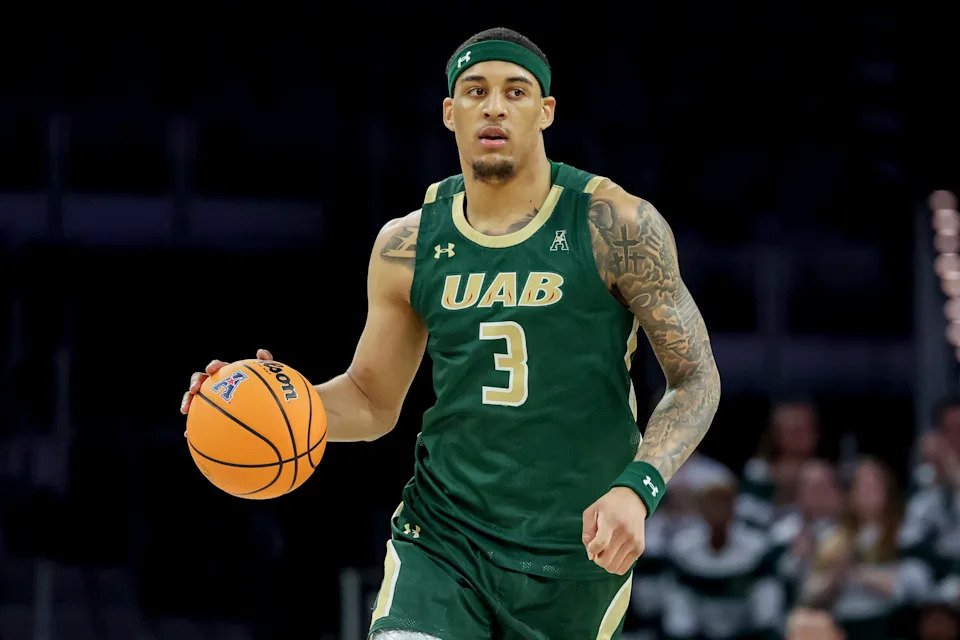
Michigan is celebrating landing Yaxel Lendeborg in the transfer portal from UAB. (AP Photo/Gareth Patterson)
(ASSOCIATED PRESS)
3. MICHIGAN
The most coveted player in Michigan’s transfer portal haul is officially on his way to Ann Arbor. Yaxel Lendeborg, the former UAB star forward who led the Blazers in every major statistical category last season, withdrew from the NBA Draft on Monday after previously announcing he would join the Wolverines if he opted to return to college.
Advertisement
Lendeborg averaged 17.7 points, 11.4 rebounds, 4.2 assists, 1.7 steals and 1.8 blocks at UAB last season and is viewed as a potential replacement for NBA-bound Danny Wolf. The hope for Lendeborg is that the 6-foot-9 forward can play alongside transfer big men Aday Mara and Morez Johnson much like Wolf and 7-footer Vlad Goldin did last season.
Had Lendeborg received a first-round guarantee from an NBA team, he might have opted to stay in this year’s draft. He instead returns to college as the centerpiece of a Michigan team that has Final Four potential if it can overcome concerns about inadequate outside shooting.
4. AUBURN
Auburn will return one of the standouts from last season’s juggernaut team that won the SEC regular-season title and advanced to the Final Four. The Tigers are bringing back point guard Tahaad Pettiford, who averaged 11.6 points per game last season as the program’s sixth man.
Advertisement
While concerns about Pettiford’s size and ability to hold up defensively prevented him from securing a first-round guarantee this draft cycle, he has a chance to establish himself as a 2026 first-round selection. The 6-foot sophomore will be the centerpiece of a reloaded Auburn team brimming with elite transfers and incoming freshmen.
Auburn coach Bruce Pearl was certainly happy to have Pettiford and Serbian big man Filip Jovic back in the fold.
5. TEXAS A&M
The biggest beneficiary of Uzan’s return to Houston might not have been the Cougars. Uzan’s decision paved the way for Texas A&M to scoop up a combo guard who has shown the ability to score in bunches.
Advertisement
On the same day Uzan announced his intent to return to Houston, Pop Isaacs backed out of his previous commitment to the Cougars and transferred instead to Texas A&M. Isaacs will have the ball in his hands at Texas A&M, whereas he would have played off-ball alongside Uzan had he stuck with Houston.
“Texas A&M needed a point guard,” Houston coach Kelvin Sampson said Tuesday. “Pop’s a very, very talented kid. I was looking forward to working with him but with Milos coming back changed some things. I think it worked out for everybody, which, to me, is the perfect scenario.”
Isaacs averaged 15 points per game two seasons ago as a sophomore at Texas Tech. He was on his way to an even bigger season at Creighton last year, scoring 27 against Kansas, 25 against Texas A&M and 18 against San Diego State before a hip injury ended his season after just eight games.
6. KENTUCKY
Otega Oweh came through for Kentucky at the buzzer on Wednesday as he did so many times during his debut season in Lexington. The 6-4 all-SEC guard took himself out of the NBA Draft hours before Wednesday’s midnight deadline for prospects to withdraw.
Advertisement
In many ways, Oweh was the quintessential example of a player with incentive to return to college in the NIL era. Despite a strong showing at the combine, he would have been lucky to be selected had he remained in the draft, yet he provides invaluable scoring punch to a Kentucky team that needs his star power.
Last season, Oweh averaged a team-best 16.2 points per game while adding 4.7 rebounds, 1.7 assists and 1.6 steals. He scored more than 20 points eight times in February and March, including a pair of game winners against his former team Oklahoma. Next season, he’ll anchor a transfer-laden Kentucky team that has a chance to contend in the SEC and crack the preseason top 10.
7. SAN DIEGO STATE
San Diego State already appeared to be the class of the Mountain West next season. Now the Aztecs will be an even bigger favorite to return to the NCAA tournament and perhaps do some damage there.
Advertisement
Hours before Wednesday night’s draft withdrawal deadline, Miles Byrd announced he is coming back to San Diego State. “Back to work,” Byrd, a redshirt junior and projected second-round pick, posted to Instagram.
Byrd’s return means San Diego State will bring back six key rotation pieces from last year’s NCAA tournament team, including 7-foot NBA prospect and Mountain West newcomer of the year Magoon Gwath. Also part of the fold is 2024-25 preseason all-conference guard Reese Waters, who missed the entire season with a foot injury.
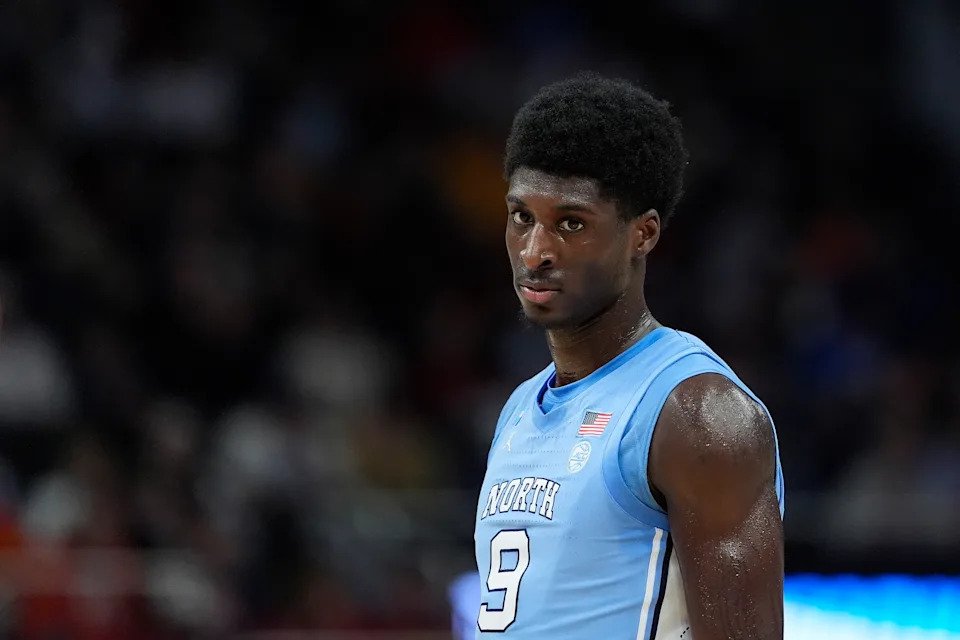
Drake Powell will not return to North Carolina next season. (Patrick McDermott/Getty Images)
(Patrick McDermott via Getty Images)
LOSERS
1. NORTH CAROLINA
Drake Powell was arguably the most important potential returner for North Carolina. The bouncy 6-foot-6 guard averaged a modest 7.4 points and 3.4 rebounds as a freshman, but he boasted the talent to blossom into a lethal perimeter scorer and lockdown defender as a sophomore.
Advertisement
It was bad enough for North Carolina that Powell told ESPN at the NBA Draft Combine that the “door’s closed” on a return to Chapel Hill. Powell elevated himself into a potential late first-round pick by measuring prototypical wing size, 6-foot-5 barefoot with a 7-foot wingspan and a 37-inch standing vertical jump.
What was worse was the perhaps unintentional parting shot he took at North Carolina on the way out the door. When asked why he was ready to jump to the NBA, , “I feel like I’m the same two-way player that was coming into college. Obviously I don’t think I got to showcase that at UNC, but the potential is still there.”
Those comments won’t help Hubert Davis recruit future NBA prospects, especially since Powell is not the only decorated recruit who didn’t reach his potential with the Tar Heels. Ian Jackson transferred to St. John’s this spring after his stock sank during his lone season in Chapel Hill. Elliot Cadeau transferred to Michigan last month after spending two underwhelming seasons with North Carolina.
2. SCHOOLS STILL SEEKING AN IMPACT TRANSFER
Schools hoping to make a late splash in the transfer portal are running out of options. Two of the best remaining transfers came off the board on Wednesday when RJ Luis and Jamir Watkins both announced they intended to remain in the NBA draft.
Advertisement
Luis, the reigning Big East player of the year, averaged 18.2 points and 7.2 rebounds, leading St. John’s to a sweep of the Big East regular-season and tournament titles. Watkins, a 6-foot-7 forward, earned second-team All-ACC honors this past season at Florida State after averaging 18.4 points and 5.7 rebounds.
North Carolina, Kansas, Ole Miss, Villanova and Georgetown were among the teams pursuing Luis, It’s unclear which programs were targeting Watkins, but Pittsburgh reportedly was among those who initially reached out.
3. DUKE
Duke coach Jon Scheyer made a slight miscalculation this spring when identifying potential targets in the transfer portal: He zeroed in on a prospect who was too good.
Advertisement
Cedric Coward began his career at Division III Willamette, spent two seasons at Eastern Washington and then followed David Riley to Washington State. The long-armed, explosive 6-foot-6 wing was averaging 17.7 points and shooting 40% from behind the arc for the Cougars before a shoulder injury halted his season after just six games.
There appeared to be a real chance Coward might play alongside the Boozer twins at Duke when he committed to the Blue Devils earlier this spring while also keeping his name in the NBA Draft. Then Coward measured a condor-like 7-foot-2-inch wingspan at the NBA Draft Combine, unleashed a 38.5-inch max vertical leap and ranked as one of the most consistent shooters in drills.
The question after that was no longer whether Coward would be a first-round pick. It became how high in the first round could he rise?
As so often is the case for Duke, reinforcements are on the way. Scheyer responded by nabbing Dame Sarr, a heralded 6-foot-8 wing from Italy, and by persuading five-star forward Sebastian Wilkins to not only pick the Blue Devils but also reclassify from Class of 2026 to 2025.
Read the full article here





